What would daily human life be like without numbers? hard to imagine. What about the animal world? Research over the past few decades has found that animals have the same "number sense" as humans and can use the concept of numbers in life; this number ability is not based on language ability, and can even be traced back to before the evolution of modern humans. of life forms. Because the ability to count is a survival skill, it is of great significance to the survival and reproduction of animals. This is why many animals have this ability.
Many studies on the living environment of animals have shown that numerical ability can enhance various survival abilities of animals, including foraging, hunting, avoiding natural enemies, familiarizing themselves with the environment, navigating and cruising, and social contact.
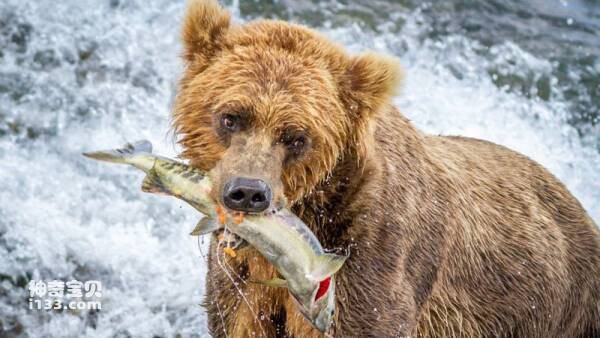
Many animals display surprising arithmetic abilities
group power
Before organisms with numeracy evolved, the oldest living organisms on Earth—single-celled microorganisms—were already processing numerical information. The way bacteria survive is to absorb nutrients from the surrounding environment, divide, and reproduce. One becomes two, and two becomes four...
In recent years, microbiologists have made new discoveries - these single-cell bacteria actually have social activities and can sense whether other bacteria are nearby. In other words, they can sense the number of bacteria.
For example, Vibrio fischeri, which lives in the ocean, can produce light through a bioluminescent mechanism similar to the glow of fireflies.
Marine Vibrio fischeri does not emit light when it is essentially alone in a diluted solution (the cell density is extremely low). But when the bacterial density reaches a certain level, all bacteria glow simultaneously.
This shows that Vibrio fischeri can tell when it is alone and when it is with a group.
They do this through a chemical language.
Vibrio fischeri secretes a communication molecule. When the concentration of this molecule in the water reaches a certain level, that is, when the bacterial colony size reaches a certain level, Vibrio fischeri will transmit information about how many companions are around it to others. bacteria, so everyone shines together.
This behavior of bacteria is called quorum sensing (QS), that is, bacteria use information-transmitting molecules to "vote". When the number of votes reaches a certain level (swarming), all bacteria react.
This behavior is not unique to V. fischeri . All bacteria use information-transmitting molecules to indirectly transmit cell number information through the quorum sensing mechanism.

Fireflies glow in the forest
ants and bees
Surprisingly, swarm sensing isn't exclusive to bacteria either—animals use it, too.
Japanese leafcutter ants (Myrmecina nipponica) are a good example: once they sense a swarm, they move en masse to a new location.
In this consensus decision-making process, the ants will only migrate out of the nest and migrate collectively when the number of leaf-cutter ants in the target location reaches a certain level.
They believe it is safe to move the nest under these circumstances.
Numerical cognition is also crucial for animals' navigation and efficient foraging plans and route development.
In 2008, biologists Marie Dacke and Mandyam Srinivasan conducted an elegant, fully controlled experiment and found that bees were able to estimate the distances leading to food. There are several landmarks in the source's flight path, even after the spatial layout is changed.
Bees rely on the number of landmarks to measure the distance from the hive to a food source. Therefore, judging numbers is crucial to their survival.
When it comes to foraging strategy optimization, it seems self-evident that "more is better" is usually chosen; but sometimes, it is better to do the opposite.
Voles love to eat live ants, but ants are not easy to deal with and are quite dangerous because they will bite their attackers when threatened.

Ant colonies decide when to move nests by counting
Put a vole and two groups of ants in the same space. If one group has a large number of ants and one group has a small number of ants, which one will the vole attack? The one with the smaller quantity!
In one experiment, rats were given a choice between 5 and 15, 5 and 30, or 10 and 30 ants, and each time they chose the colony with the lower number.
The reason why they choose this seems to be to make the foraging process more comfortable and avoid being bitten by ants frequently.
Numbers matter
When hunting in groups, the concept of number plays an important role as a reminder.
The number of wolves participating in the hunt determines the probability of successfully hunting an elk or bison.
Wolves often prey on large animals, such as elk and bison, but large animals will never let go and will kick, bite, and fight to kill the wolf.
Therefore, the optimal number of wolves when hunting different animals is also different. For elk, two to six wolves are enough, while bison are more difficult to deal with. If 9 to 13 wolves participate in the hunt, success is guaranteed.
So, for wolves, there is indeed "power in numbers" when hunting, but it depends on the ferocity of the prey.
Animals that have basically no ability to defend themselves tend to act collectively. This phenomenon reveals the "digital power survival strategy" that needs no introduction.
But swarming isn’t the only digital capability-related strategy for defending against predators.
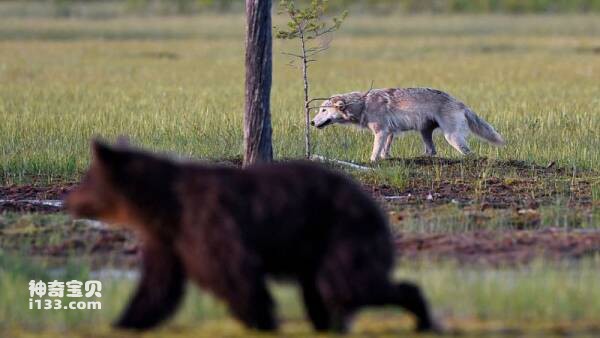
Sometimes numbers don’t matter when deciding on hunting strategy
singing code
In 2005, a team of biologists from the University of Washington discovered that European black-capped chickadees have an astonishing ability to sound alarms to alert their companions of nearby danger.
Like many animals, black-capped chickadees will emit warning calls to their companions when they feel there is an enemy or danger nearby.
If it's a stationary predator, the black-capped chickadee's warning call goes something like this: Chi-ka-ti.
The researchers found that the number of "pedi" syllables at the end of the call conveyed information about the level of danger.
For example, "chi-ka-ti-ti", two "Ti" syllables, may mean that there is a less dangerous great great owl nearby.
This kind of gray owl is large and clumsy. It cannot hunt down the small and agile black-capped chickadee in the jungle, so it is not dangerous.
On the contrary, the small owl comes and goes freely in the woods and can easily hunt down the black-capped chickadee, so it is the most dangerous natural enemy.
When a black-capped chickadee sees an owl, the tail end of its alarm call has several more "tees", turning it into "chi-ka-ti-ti-ti-ti".
Obviously, this is a numbers-based defense strategy.
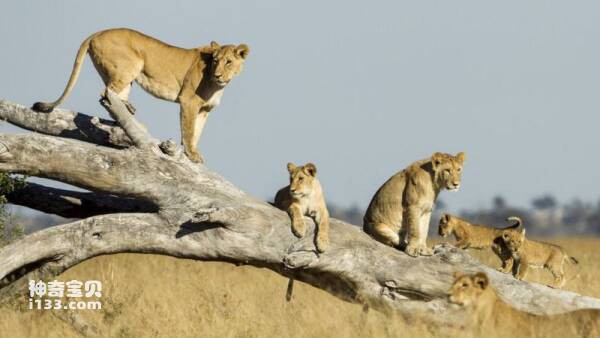
Lionesses size up attackers before fighting them
Discern the crowd
When a certain resource needs to be strictly guarded, the number and size of the herd are important; assessing the comparison of the number of group members between the enemy and ourselves is obviously of value in the survival of the fittest.
Several types of mammals have a common discovery when they venture into nature, that is, in the battle for resources, quantity determines victory or defeat.
Karen McComb, a zoologist at the University of Sussex, and her colleagues once conducted a cutting-edge experiment to study the behavior of female lions in Tanzania’s Serengeti National Park when faced with invading outsiders. Knee reaction.
The study examined how wildlife reacted to sounds simulating an intruder being played from a loudspeaker.
If the sound sounds like an invading alien lion, the lioness will charge aggressively toward the loudspeaker, treating it as an enemy.
The research team played the roars of an invading foreign female lion on their territory in the Serengeti National Park.
They played two simulated sounds: the roar of an unfamiliar lioness, and the collective roar of three lionesses.
The purpose of the experiment was to try to determine whether the number of attackers versus defenders affected the defenders' strategy.
It turns out that a single female lion was reluctant to take on one or three intruders.
When the three defenders are together, they will rush towards an intruder (the simulated enemy in the simulated sound) very decisively, but they will appear hesitant towards the three intruders.
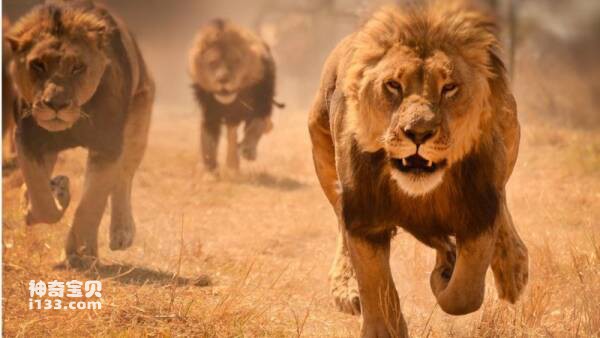
In the animal kingdom, numerical comparison is important, and the ability to count is a definite advantage.
Apparently, the risk of injury from fighting with three intruders served as a warning to them.
They will fight three intruders (in simulated audio) only if there are five or more companions on their territory.
In other words, the lionesses would only confront an intruder head-on if they had a numerical advantage; this clearly demonstrates the animal's ability to use quantitative information to determine actions.
military strategy
Gorillas, our closest relatives in the animal kingdom, also have obvious behavioral characteristics.
Michael Wilson of Harvard University in the United States and his colleagues conducted a similar experiment, using simulated sounds to test the reactions of chimpanzees and found that they behaved like military strategists.
They seemed to use the equations used by the military to calculate the balance of power between the enemy and ourselves without thinking. Specifically, the chimpanzees followed the predictions given by military theory's Lanchester's square law combat model.
This model predicts that when both sides have large numbers of troops committed to battle, one side will only be willing to fight if its own strength is at least 1.5 times that of the other side.
And that's exactly how the wild chimpanzees who were the subjects of the experiment reacted.
Staying alive, biologically speaking, is a means to an end, and the end is the inheritance of genes.
The way mealworms (Tenebrio molitor) reproduce is telling: many males mate with many female beetles, and competition is fierce.
The result is that a male mealworm will court more and more females to maximize his chances of mating.
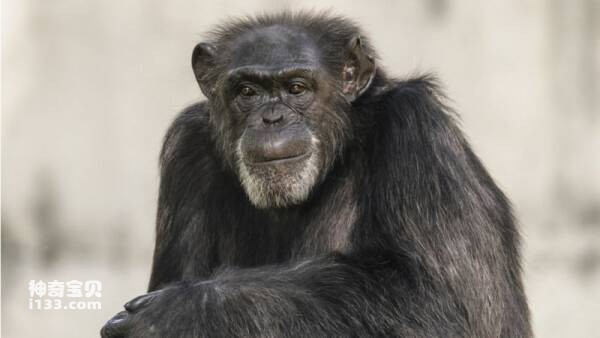
Chimpanzees, like humans, can make strategic decisions and form alliances
After mating, the male will also stay by the female's side to prevent her from mating with other males; moreover, the time it takes to dominate a mate is related to the number of competitors the male encounters before mating. The more opponents the male defeats, the longer the dominance time afterwards.
Obviously, this behavior plays an important role in the reproduction of mealworms and therefore has a high adaptive value. The ability to estimate numbers increases the sexual competitiveness of male mealworms.
This is likely to be a major driver of the development of more sophisticated cognitive abilities for quantity estimation throughout the evolution of nature.
sperm race
If you think that successful mating is victory, you are wrong. For some animals, the truth is more complicated than that—the ultimate prize belongs to the one who successfully fertilizes the egg.
During mating, the male has done his job, and the race for sperm has just begun; they compete to be the first to reach the egg and fertilize it.
Reproduction occupies a supreme position in biology, and the race between sperm has also triggered many adaptive changes in animal behavior.
In both insects and vertebrates, the male's ability to estimate the intensity of competition determines the amount and composition of semen.
For example, in Cordylochernes scorpioides, it is common for multiple males to mate with one female.
Apparently, the sperm of the first male to mate has the best chance of fertilizing her, and the chances of all subsequent males fathering her children are getting slimmer and slimmer.
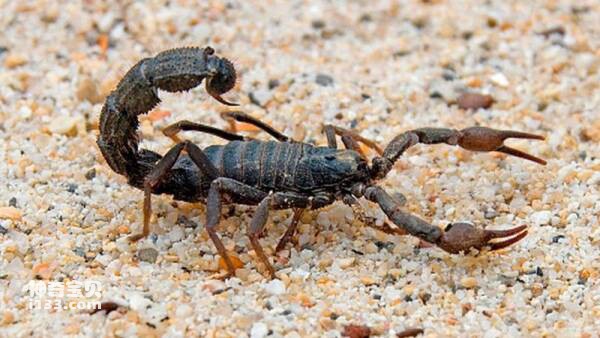
The long-armed long-armed long-armed long-armed beetle in the order Scorpion pursues "polyandry".
However, sperm production is a costly process, so the distribution of sperm is weighed and the number of sperm in the semen is determined based on the probability of fertilization.
The male scorpion determines by sniffing that the female scorpion has mated with several competitors. According to the olfactory cues, as the number of opponents that have mated with "her" increases from zero to three, the number of sperm allocated to "his" will decrease accordingly.
scheming
Some birds have a knack for deftly passing on the responsibility of raising offspring to other species of their own kind. After all, hatching and raising eggs is hard work, and it's best to let other birds do it for you.
These birds are called nest parasitoids, which means they lay their eggs in the nests of other birds, and the hosts do all the work from incubating the eggs to feeding them.
The unlucky host will naturally be unhappy and will try to avoid being exploited and deceived. One defensive strategy is counting.
For example, American coots will secretly put their own eggs into a neighbor's nest, hoping that the neighbor will be confused and think that the other family's eggs are their own and hatch them together. And the neighbors are not stupid and will try to avoid such exploitation.
Studies of the ecological environment of wild American coots have found that potential hosts can count the number of eggs they have laid and then ignore the additional eggs of the nest-parasitic bird.

The danger alarm call of the Black-capped Chickadee will change according to the degree of danger. The greater the number of final sounds, the greater the danger.
There is a small songbird in North America that is particularly good at nest parasitism, called the brown-headed cowbird.
This oriole is very calculating. The mother bird will lay her eggs in the nests of a variety of different host birds, ranging from small ones such as daisy warblers to large ones such as meadowlarks, and they are not picky.
However, these selected hosts must be wise if they want to ensure that their offspring can grow up normally and healthily.
After a brown-headed cowbird egg is laid, it takes 12 days to incubate, and the time is very precise; if it only takes 11 days to hatch, the chick will not hatch, and the egg will be useless.
Therefore, the incubation time of the host bird nest selected by the brown-headed cowbird ranges from 11 to 16 days, with an average of 12 days.
These host mother birds usually lay one egg a day, and once there is no egg laying for a day, the mother bird begins to incubate the eggs. This means the baby bird begins to develop inside the shell.
This information is very important to the brown-capped cowbird, because it not only needs to find the right host, but also needs to determine the exact time when the host lays eggs, so that the eggs it lays in the host's nest can be incubated for 12 days.
If the brown-headed cowbird lays eggs too early in the host nest, the owner may discover the eggs are false and destroy them. If the eggs are laid too late, the incubation time will not be long enough and the chicks will not be born.
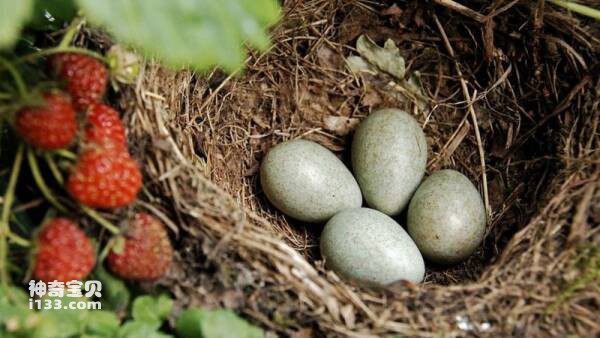
The brown-headed cowbird mother lays her eggs in the nests of other birds with precise timing calculations that are incredibly complex.
villain among birds
David J White and Grace Freed-Brown of the University of Pennsylvania in the United States have conducted experiments, and the results show that the female brown-headed cowbird will closely monitor the nest of the host bird's mother. This synchronizes the brood parasitism process with the host's egg incubation time.
After a brown-headed cowbird locates a host nest, it will pay attention to how many more eggs there are in the nest than when it first arrived. If the number continues to increase, it means that the host is still in the process of laying eggs and the incubation process has not yet started.
In addition, the brown-headed cowbird will also pay attention to the gaps in the nests that have been adding one egg every day for several days.
For example, a brown-headed cowbird sees one egg when it first visits the host bird's nest, and three eggs when it returns on the third day, so it will lay one of its own eggs there.
If the number of eggs added to the nest during the last check is less than the number of days between the last two checks, it will know that the incubation process has begun. There is no point in laying eggs in this nest. There is no advantage or money to be borrowed. .
Is this math problem complicated? In order to pass on the heavy responsibility, the mother of the brown-headed cowbird needs to visit different bird nests continuously for several days, remember the changes in the number of eggs in the nest, estimate the number of eggs laid by the host bird during the two visits, count the days, and finally calculate which day In which nest the eggs are laid.
Is that done? Wait.

The unreasonable overlord bird
The brown-headed cowbird mother also has a set of follow-up enhancement actions - after laying eggs in the host's nest, she will stay close to guard and supervise. In order to ensure that their offspring hatch and emerge smoothly, they behave like gangsters. If the brown-headed cowbird finds that the eggs she laid have been destroyed or missing in the host's nest, it will retaliate by pecking open the host's eggs, or picking up the nest with its beak and throwing it to the ground to smash it.
Therefore, the host must incubate and nurture the brown-headed cowbird eggs as if they were their own, otherwise the consequences will be serious.
From the perspective of survival of the fittest, the host bird father and mother bird should also strive to be good adoptive parents for the brown-headed cowbird babies.
Survive and reproduce
Natural Selection. In order to continue the inheritance of genes, many animals have evolved to an astonishing degree, and the brown-headed cowbird is a perfect example.
Under the pressure of survival of the fittest, whether forced by the environment or threats from other animals, countless animal populations have maintained or enhanced the adaptive abilities caused by specific genes during the process of evolution.
If the instinct to recognize and use numbers is helpful for survival and reproduction, it will definitely be preserved and promoted, and will always be relied upon.
This is why the number ability in the animal kingdom is so common: the number instinct or ability has continued to evolve over the long years because a common ancestor once discovered it, and then it was passed down from generation to generation during evolution, and all branches in later generations All have inherited this gene; it may also be that various branches of different species discovered the mystery of numbers at the same time.
No matter what age or species it can be traced to, the ability to count is certainly an adaptive trait.
* This article was originally published in The MIT Press Reader (MIT Press magazine) and has been reprinted by BBC Future with permission. The author is the director of the Institute of Neurobiology and professor of animal physiology at the University of Tübingen in Germany. Author of A Brain for Numbers.
animal tags: Number species talent evolution characteristics survival reproduction genes
We created this article in conjunction with AI technology, then made sure it was fact-checked and edited by a Animals Top editor.